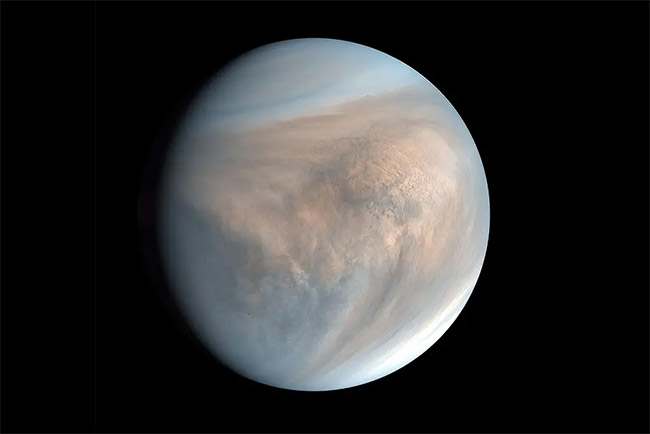The Pioneer mission to Venus captured the public imagination in 1969, but the truth remains unclear. We’ll discuss some of the geological characteristics of Venus, its magnetic field, and the pressure exerted by its thick atmosphere. But what did the Martian say when he landed on Venus? Let’s find out! Let’s explore this enigma further!…and remember to look up “Martian” if you haven’t already!
[lwptoc]Pioneer mission to Venus
The Pioneer mission to Venus consisted of two separate components. The first component was the Pioneer Venus Orbiter, which began measurements of surface relief in January 1976. The altimeter measured the distance from the orbiter to the surface of Venus and subtracted the results from its orbital radius, which is the distance between the spacecraft and the planet’s center of mass. Another component of the mission, called the Deep Space Network, maintained two-way communications with the spacecraft and produced radiometric data. The JPL team calculated the orbit of the spacecraft, and the MIT group used the altimeter measurements and radar data to model the surface of the planet.
The Pioneer Venus orbiter collected data for two decades and sent back several dozens of images. The Pioneer Venus Orbiter was the first of the Pioneer Venus missions, and the other mission, Pioneer Venus 2, launched in 1981, carried four probes into Venus’ atmosphere. The Ames Research Center, which manages the Pioneer spacecraft, also conducted the experiments. The Pioneer Venus mission has been described as the most successful U.S. government mission to Venus.
Geological characteristics of Venus
The first mission to land on Venus in 1970, Soviet Venera 13, managed to survive for just a few hours before succumbing. Its pictures of the orange-brown rocks were sent home to Earth, but the Soviet mission did not survive. Scientists have modelled Venus’s climate and know that the planet was capable of sustaining liquid water on its surface as recently as a billion years ago.
Because Venus is so much smaller than Earth, it is believed that it still has volcanic activity today. In fact, the planet’s surface was resurfaced by lavas around half a billion years ago. Because Venus does not have a discernible plate tectonic system, the volcanic activity was probably fueled by thermal plumes rising from the mantle. Hence, the surface is reminiscent of a lava lamp.
Magnetic field of Venus
One of the best-known mysteries in the Solar System is the magnetic field of Venus, and scientists are trying to figure out why it doesn’t have one. They believe that the lack of a global magnetic field is due to its iron-rich core, which must be partially molten and in motion. In the past, researchers thought that the slow 243-day spin of the planet had inhibited this internal churning.
The magnetic field of Venus is similar to that of the Earth, but its composition is different. The Earth’s magnetosphere is 10 times larger than that of Venus, so scientists were not expecting to see this phenomenon in the Venus magnetotail. This discovery, made by Tielong Zhang, lead author of the Science Express paper, provides a new mechanism to explain the loss of gases in Venus’ upper atmosphere. Moreover, the discovery has implications for the loss of water from Venus after the runaway greenhouse effect.
Pressure exerted by thick atmosphere
Scientists have confirmed that the dense atmosphere of Venus has an immense impact on the planet. Venus’s cloud deck is incredibly thick, rising up to 68 km (42 miles) above the planet’s surface. Above the main clouds, however, the atmosphere is made up of thin hazes that can be as low as 32 km (20 miles) and as thick as 90 km (56 miles) above the surface. The upper haze is even thicker near Venus’ poles.
In addition to the high temperature, the dense atmosphere of Venus has a highly variable composition. In the daytime, the atmosphere on Venus reaches a maximum temperature of 300 kelvins (K), which corresponds to about 80-98 degrees Fahrenheit. In the evening, this temperature drops to about 100-130 K, the equivalent of half a mile under the ocean. This composition of Venus’s atmosphere is thought to be the key to its unusual weather and atmosphere.
Evidence of ancient rivers and lakes
The discovery of ancient riverlike features on Venus is forcing scientists to rethink their theories about volcanic activity. Scientists believe that Venus may have had shallow lava aquifers that eroded its valleys. The existence of such structures suggests that aqueous processes created thick layers of carbonates and salts on Venus. The lava on Venus may have acted as a model for water’s ability to shape the surface.
Scientists have long believed that Venus was formed from Earth’s ingredients but took a different evolutionary path. However, measurements from NASA’s Pioneer mission suggest that Venus did have an ocean in its early history. Because Venus is much closer to the sun than Earth, it receives more sunlight. In the beginning, this ocean dissolved because Venus was exposed to ultra-violet radiation. As the water vapor was broken down, hydrogen and carbon dioxide were released into space. The buildup of carbon dioxide in the atmosphere caused a runaway greenhouse effect.

